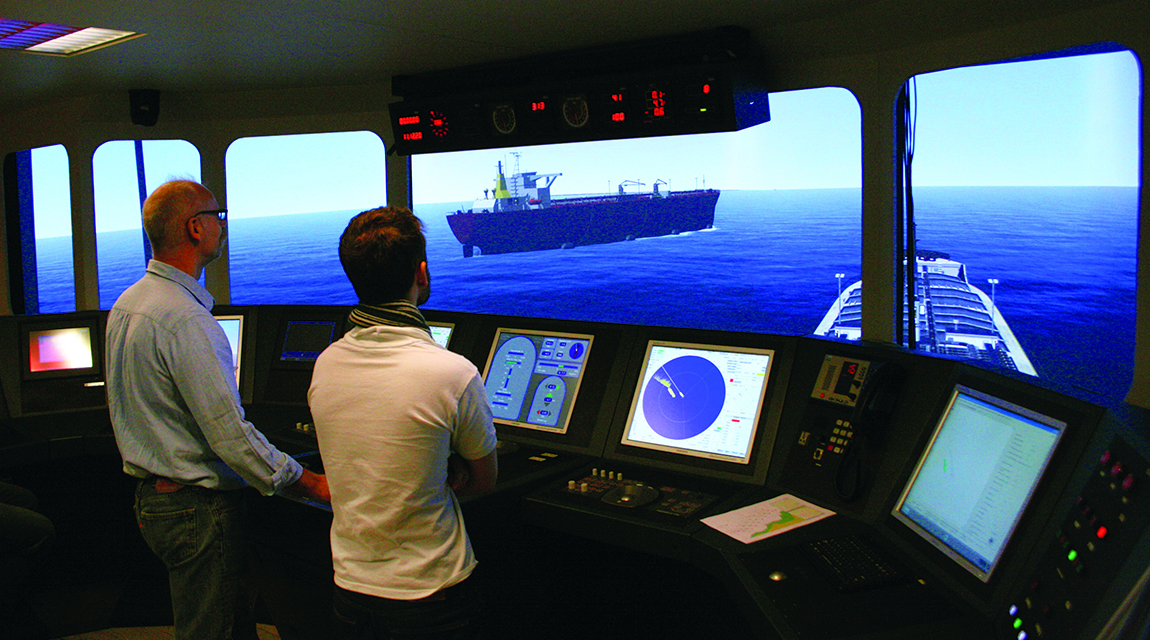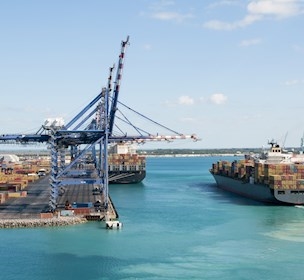How to successfully manoeuvre a megaship
Over the past five years, the number of megaships has increased significantly. The megaships are often container ships with a TEU capacity of over 15,000.
These ever-larger ships are a cost-effective way of transporting large amounts of goods. At the same time, the megaships are challenged by the ports around the globe as well as their own manoeuvring capabilities.
Technical challenges
The megaships, that at the moment are up to 60 m in width and with a draught of 18 m, place additional requirements on the ports they visit. Not only should a port dredge in order for the vessel to enter the port, but also construct new berths with sufficient water depth and bollards that can withstand the increased forces from the larger vessels.
Another challenge for a port is the loading/unloading situation where the container crane might have to span more than 60 m to load and unload containers furthest away from the berth.
For the ship construction there are also massive challenges in terms of both hull strength and equipment and machinery. Everything is larger, e.g. mooring and anchor equipment. For some designs it has been decided to install twin rudders/propellers for distributing the power needed for a service speed in the range of 21 to 24 knots.
Technical advantages
When compared to a single-propeller/engine solution, a spin-off of installing twin machinery on container megaships is saving power. When distributing the power on two propellers with a diameter of 9-10 m, the total power required for a given speed is 10-15% less than the power required for a construction with one propeller with a diameter of 10 m, basically the largest propeller diameter that can in practice be built today.
Furthermore, it might be possible to save stern thruster installations as the ship navigator can perform crabbing (one engine going ahead while the other is going astern) with the two propellers, and in conjunction with the rudders, a side force aft can be generated.
Manoeuvring advantages
The container megaship with a twin-rudder/propeller installation has some obvious manoeuvring advantages.
For any large ship arriving to a port, there is the challenge of slowing the ship down and at the same time having enough speed and propeller thrust to maintain steering. This can be particularly difficult when entering a small port or passing a breakwater with cross-current or strong side winds.
When manoeuvring a megaship with twin rudders/propellers, there is the option of keeping one engine going ahead, using the rudders to maintain heading, while having the other engine going astern to slow the ship down. This manoeuvre is not possible with a single-rudder/propeller ship.
Another advantage of twin-rudder/propeller vessels is the final manoeuvring adjustments when going alongside a berth, crabbing and moving the ship sideways with engines and bow thruster(s) which is possible with a twin-propeller megaship and not with a single-propeller megaship unless using stern thrusters.
Most ports require use of tugs when berthing and unberthing these megaships. Due to the increase in ship size, the bollard pull requirement for tugs has increased as well. Earlier a large tug had a BP of 50 ton, but today the requirement has reached 80 ton BP or more.
Training
It is important that the navigators know the ship’s manoeuvring limitations. Therefore, bridge officers and pilots navigating megaships need to go through an extensive training program. This includes, among other things, ship handling training that is essential for the safe navigation of the ship. The training can be given using manoeuvring simulators supplemented with onboard training. As many of these ships go through narrow straits or shallow waters, specific training in navigating the ship through such areas is essential as bank effects, ship to ship interaction effects and shallow water effects may occur on a scale the navigators are not used to.
Also, training of tug masters is becoming ever more essential for successful port manoeuvres when assisting megaships. The tug masters need to understand the massive loads that can be created on the towlines, e.g. due to wind forces on the megaship that with a full deck load of containers can be more than 15,000 square metres.
Tug masters can also be trained by use of simulators. Joint training in ship handling for both the bridge crew, pilots and tug masters has great advantages as the simulated scenarios together with discussions among the participants of a particular manoeuvre can make everyone understand the challenges and reach the best solution for the operation and not least understand the actions of the other part during a manoeuvring operation.




